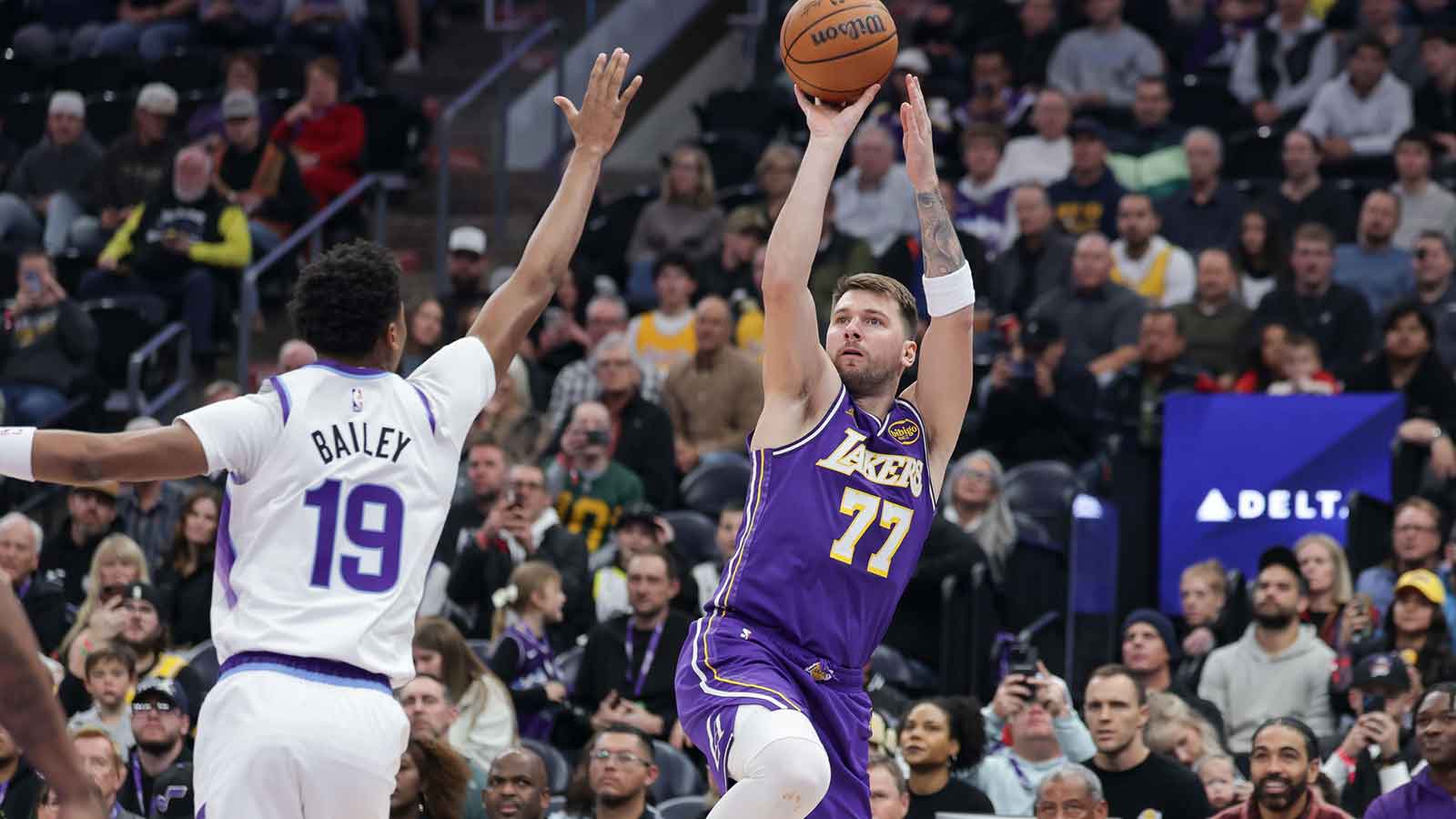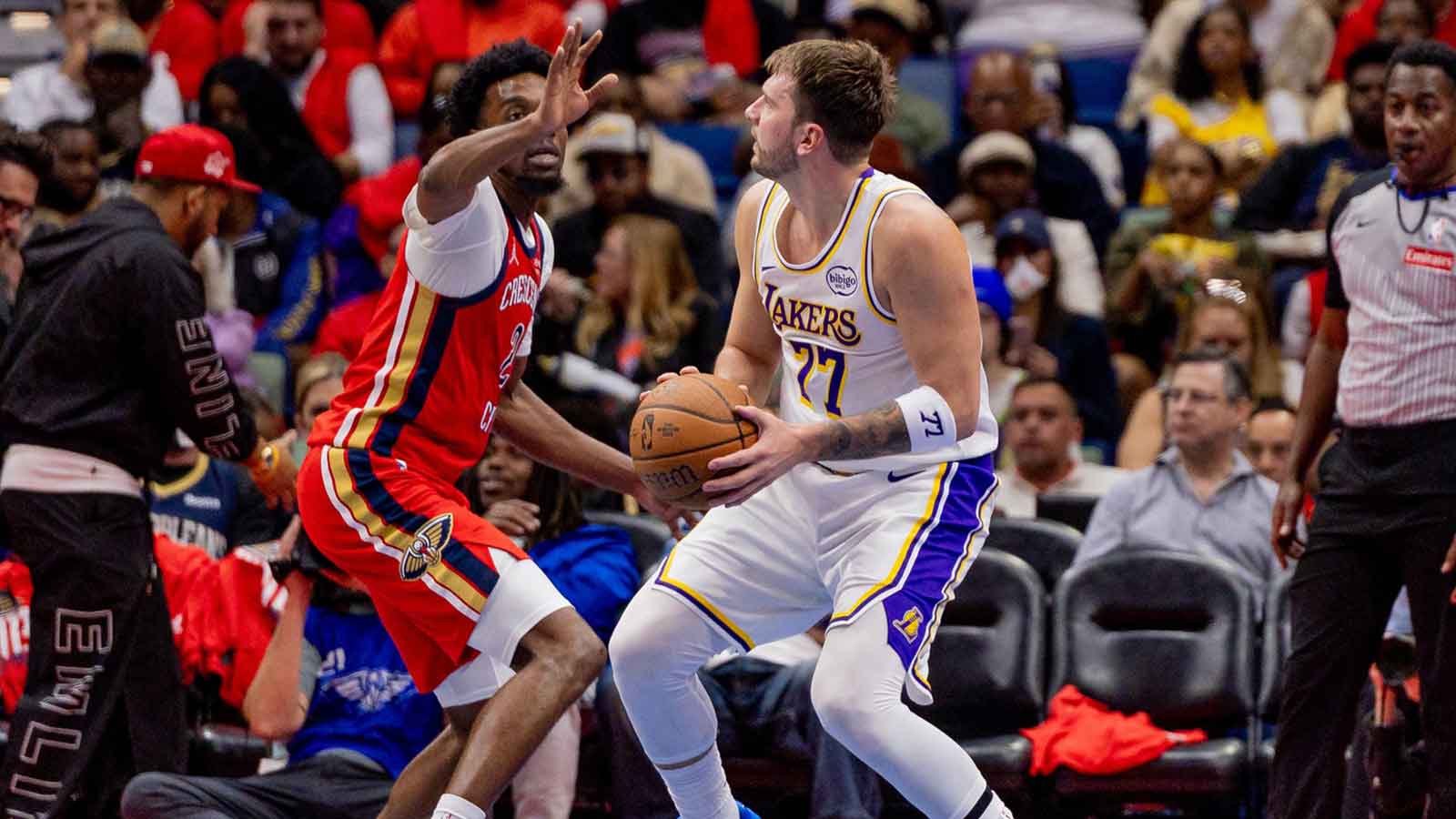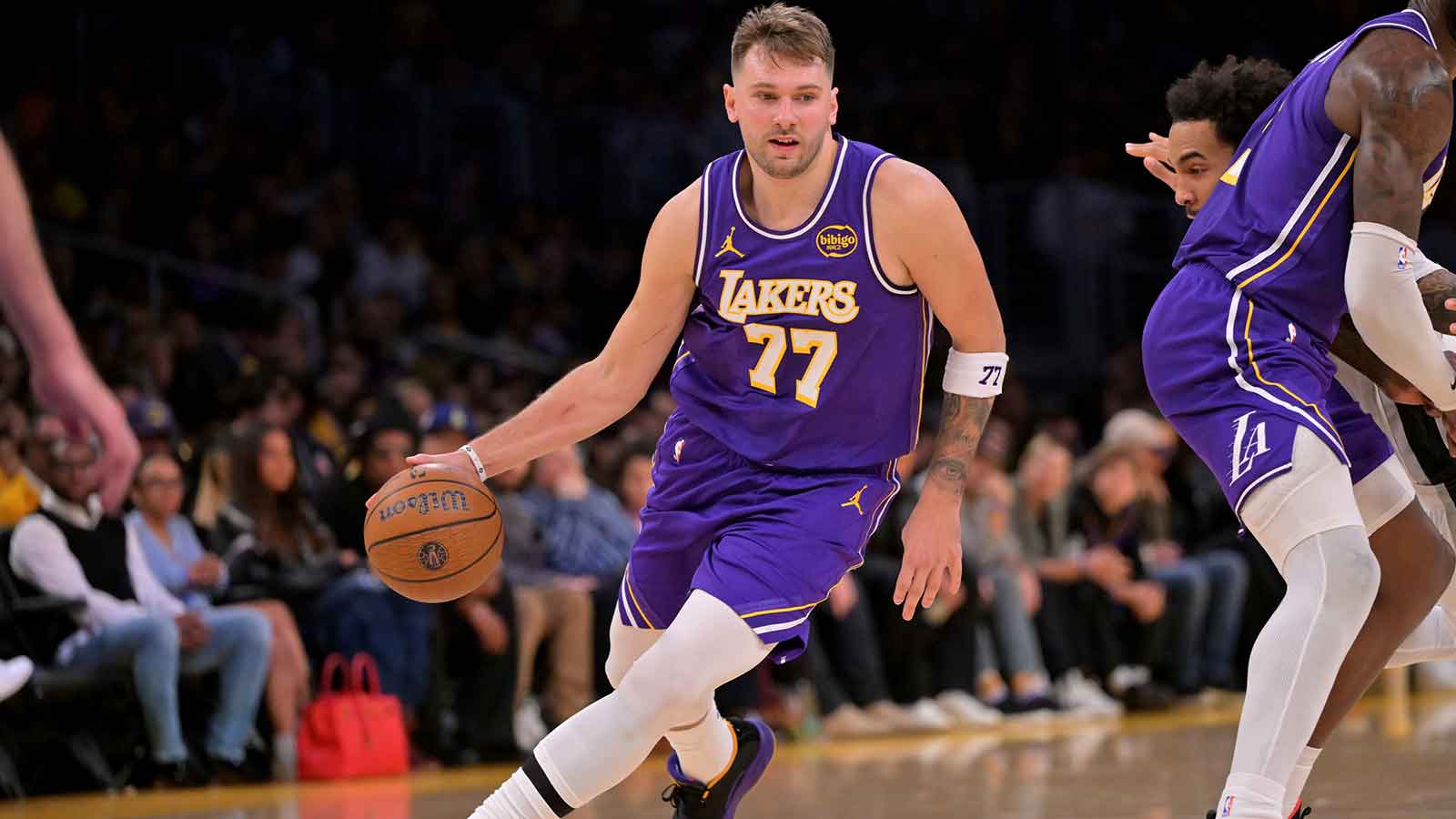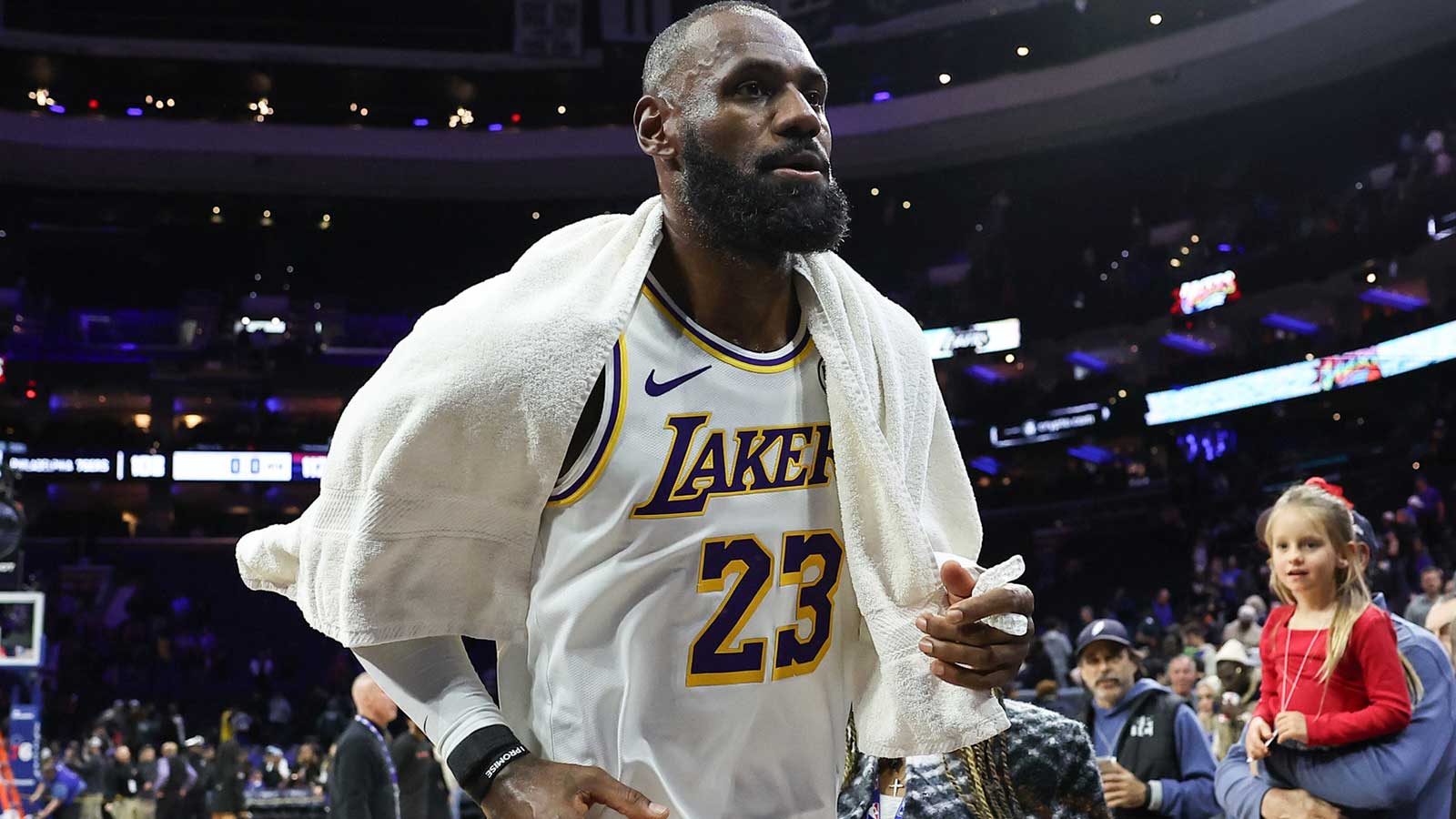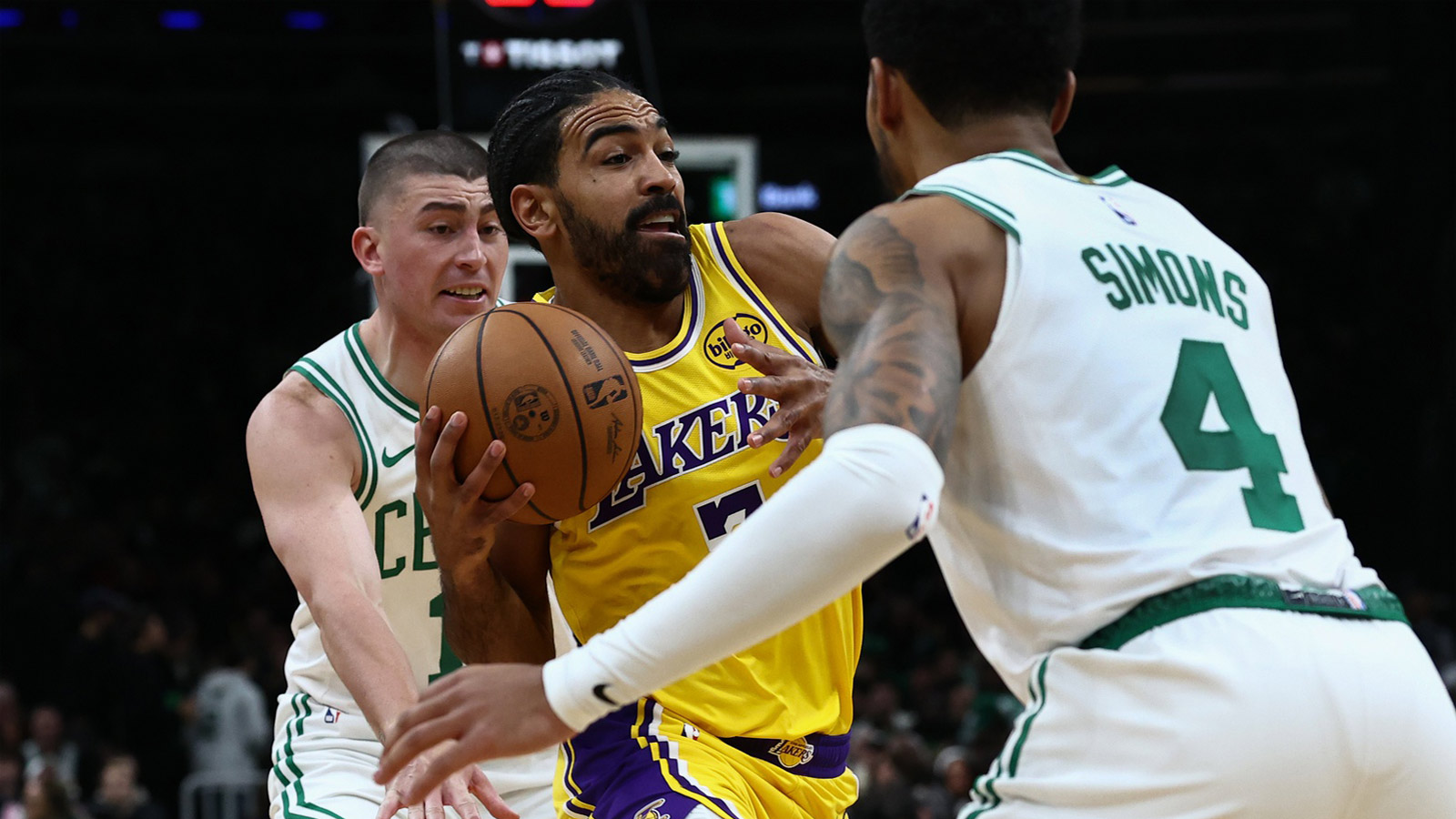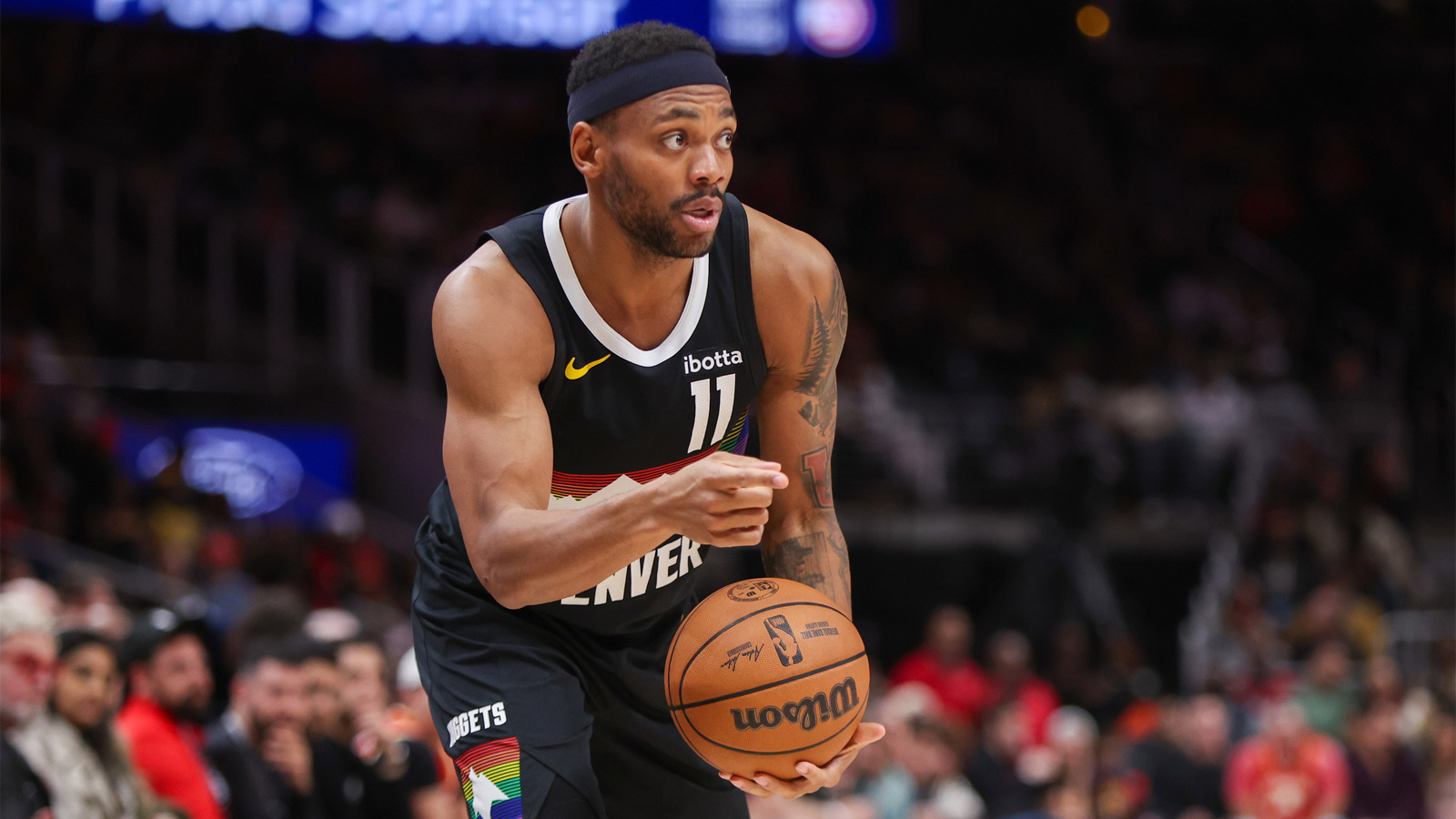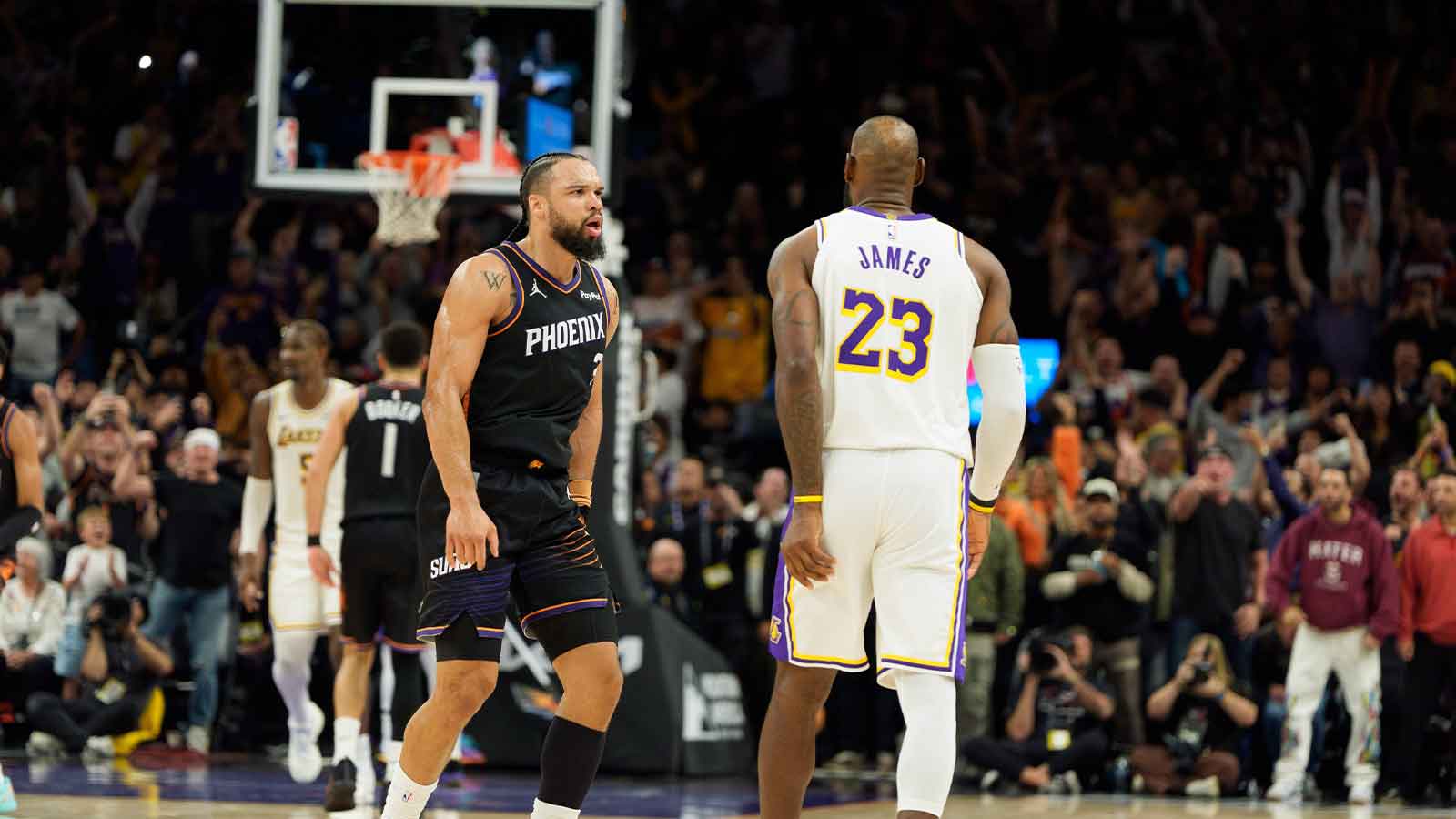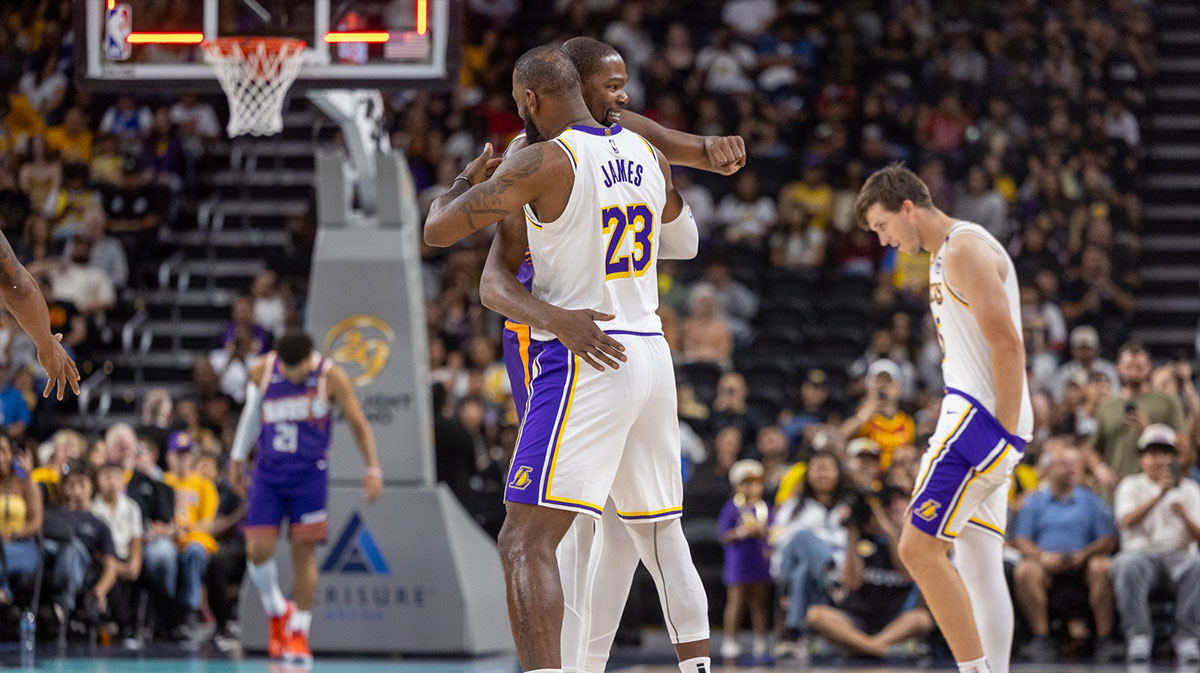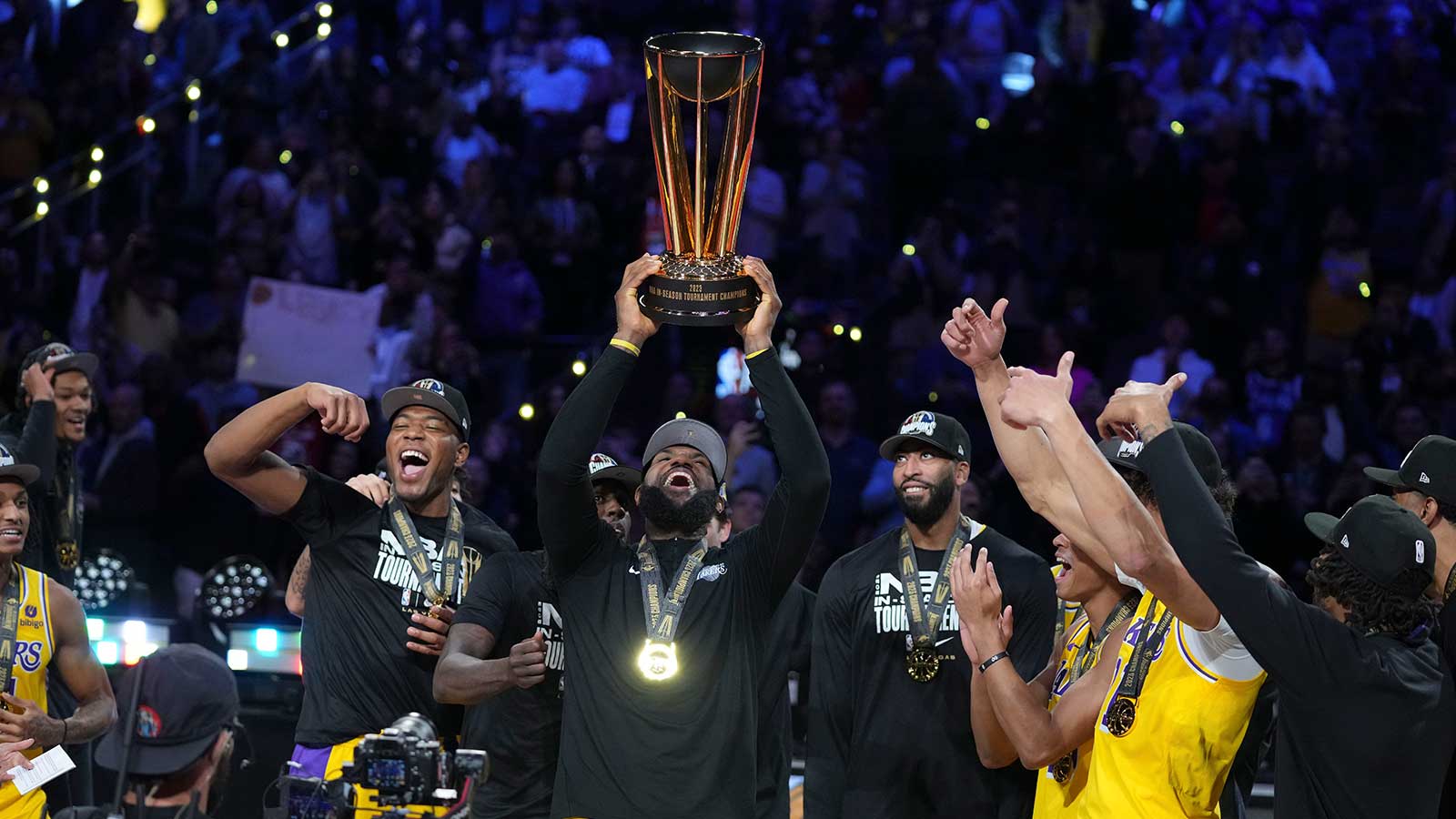Three games past the statistical threshold for when net rating and win percentage kinda matter, the 3-10 Los Angeles Lakers have, self-evidently, a “laundry list” of issues. The roster is shallow on talent. Russell Westbrook's move to the bench has been productive, but he still frustrates teammates with decision-making, wants to close alongside LeBron James and Anthony Davis — lineups that do not work — and becomes detached when he doesn't. The team's spirit and effort, especially on defense, have wavered. Los Angeles needs LeBron and AD to be available and otherworldly to be remotely competitive, and — while both have been top-2o players — they've already dealt with injuries and haven't been quite dominant enough. Add all that up, and the Lakers are 27th in net rating and 28th in win percentage.
Beyond the X's and O's, the Lakers are facing a looming existential crisis amid growing impatience from the fan base and, more directly, LeBron. The 20-year veteran and a contingent of his teammates are reportedly in favor of trading future picks for immediate help, while the front office remains dubious about parlaying their limited future assets to marginally upgrade an obvious non-contender. (The New Orleans Pelicans have swap rights on L.A.'s 2023 first-rounder — ouch.)
Squint and you'll see a few positives. Westbrook, despite his chagrin, is in the Sixth Man of the Year hunt — a goal of Ham's. The coach deserves plaudits for getting Westbrook to accept a reduced role, being stringent with the rotation, and implementing a scheme that has created steady good looks. A few role players — Troy Brown Jr., Austin Reaves, Wenyen Gabriel, and especially Lonnie Walker IV have been useful contributors, if not significant needle-movers. Thomas Bryant and Dennis Schroder are set to debut on Friday ahead of a light upcoming schedule.
I asked Lakers head coach Darvin Ham about Max Christie's recent opportunities and whether he can become a rotation mainstay: pic.twitter.com/51Tjxl03GW
— Michael Corvo (@michaelcorvo_) November 12, 2022
But, the Lakers find themselves at the bottom of the standings and, for the second season in a row, as a league-wide punchline. Indisputably, this whole thing has gone worse than anticipated. Let's highlight three specific problems.
3. Kendrick Nunn is MIA
The Lakers expected Nunn to be an X-factor — perhaps their third- or fourth-best player. Jeanie Buss mentioned him over Westbrook when previewing the 2022-23 squad. Nunn opened the season with the highest career scoring average (15.0 PPG) outside of Bron/AD/Russ and the highest career 3-point percentage on the roster. He earned raves throughout his purportedly “phenomenal” training camp.
Uh…
Nunn has been awful. He has hit double figures twice: 13 mostly garbage time points on Opening Night, and 18 inconsequential points in a blowout loss to the Utah Jazz. Here were his scoring totals prior to the latter game: 0, 0, 3, 9, 9, 0, 0.
Nunn followed up his Utah performance with a bagel and -16 against the Los Angeles Clippers — his fifth scoreless outing of the season. He spent three games out of the rotation, including one DNP. He has looked completely lost on offense. His playmaking is utterly ineffective. He's shooting 30.9% from the field. His offensive rating is 71.
Kendrick Nunn seems to have forgotten how to basketball.
Through his 148 minutes so far it'd be harder for him to be worse.
Just about every possible efficiency & production element of his game is a career low. Oh and he has a career high rate of generating turnovers. pic.twitter.com/FzOVqTLRSf
— Cranjis McBasketball (@Tim_NBA) November 15, 2022
He has been equally inept on defense — not the “waterbug” that Ham envisioned. Nunn has been worth -0.5 Win Shares, and the eye test paints a darker portrait.
Darvin Ham called Nunn a “water bug” in camp, specifically referencing his ability to navigate screens and be an effective chaser. It was an all-around bad Lakers debut for Nunn and it’s the Warriors, but something to monitor. https://t.co/g4A6Ovoocn
— Michael Corvo (@michaelcorvo_) October 19, 2022
Nunn deserves leeway after missing all of 2021-22 with a knee bone bruise. Still, his utter ineffectiveness has been jarring. The Lakers, desperate for wins, have to decide whether to keep trotting him out there with hopes that he shakes off the rust and finds his pick-and-roll rhythm, or relegate him to benchwarmer status.
2. Bricklaying
The Lakers were a bottom-1o 3-point shooting team in 2021-22 and did little to address the problem last summer. At Lakers Media Day, Rob Pelinka said the team would mostly rely on internal improvement to cobble together adequate spacing while keeping eye on the trade market. (Patrick Beverley was theoretically the first example of acquiring shooting via trades.)
“I think in terms of shooting, we know that’s a needed skill,” the general manager said. “Some of that can come from outside by additional roster moves or roster moves during the season. But shooting growth can also come from within and we do feel like there are players on our team this year that you’re gonna see that growth.”
In the preseason, Los Angeles tacked on recent DoorDash driver Matt Ryan, who is leading the team's rotation players in 3-point percentage (41.4%) and carries a unique gravity (to the Lakers) with his off-ball movement.
Overall, the Lakers have been historically frigid from downtown. It took one game for LeBron to point this out. Reaves (33.3%), Brown (33.3%), Walker IV (29.8%), Beverley (25.9%), Nunn (25.0%), and Juan Toscano-Anderson (10%) aren't cutting it. AD (26.7%) is struggling to hit Js for the third straight season. LeBron (23.9%) is having a career-worst shooting campaign.
The Lakers are last in the NBA in 3-point percentage (29.8%) and that figure is boosted, ironically, by the steamy yet unsustainable stretch from Westbrook: 11-of-28 over the past six games.
And the thing is: they're getting open! If your tumbler of Lobos is half-full, Ham's “four-out, one-in” system has proven adept at generating ball movement and high-quality shots. If it's half-empty, you're watching opposing defenses happily allow the Lakers to hoist in order to cut off driving lanes. Los Angeles is converting a putrid 27.5% of its 3s when a defender is more than six feet away.
This is a roster problem, not a scheme problem.
It's fair to expect a handful of guys — LeBron, Nunn, Walker IV, Pat Bev, JTA — to make a few more shots. Max Christie has hit four of his six triples. Two-way rookie Cole Swider — perhaps their best pure sniper — is close to returning from a stress fracture, though his defense is light years from NBA-ready. Schroder and Bryant are somewhat capable outside shooters. They've worked out Tony Snell (39.1% career from 3), Joe Wieskamp (35.7%), and Moe Harkless (32%).
Regardless, the Lakers are going to be a bottom-barrel shooting squad, possibly barring a dramatic trade. Netting shooters in a Russ deal (e.g. Bojan Bogdanovic/Alec Burks, Buddy Hield/Myles Turner, Terry Rozier/Gordon Hayward, a platter of Jazz dudes, Kyrie Irving) might please LeBron, but does it make the Lakers formidable? Perhaps a smaller trade — Pat Bev/Nunn/Walker + one pick? — for a shooter(s) is more prudent.
1. Second-half woes
The Lakers blew a 13-point first-half lead in their most recent loss to the Sacramento Kings.
With a couple of exceptions, the Lakers have profoundly struggled after halftime. The Lakers have a +0.6 net rating in the first half. In the second half, that number drops to … -13.4. In the third quarter? -19.3!
In crunch time — when shooting, decision-making and chemistry are paramount, as opposed to pushing the pace (which the Lakers do well), the Lakers have been abysmal. As SCNG's Kyle Goon noted, the Lakers have a -35.2 net rating (28th in the NBA) in their five games that have featured “clutch” situations (within five points in the last five minutes). The Lakers have an 85.7 offensive rating and a 30% 3-point percentage in those scenarios. Meanwhile, Westbrook is a team-worst -19 in clutch scenarios, per Goon. He has made a bevy of head-scratching choices, including an ill-advised 2-for-1 that got him benched by Ham as the Lakers coughed up a game to the Portland Trail Blazers.
Russell Westbrook said that he was looking for a 2-for-1 opportunity when he attempted this shot pic.twitter.com/zzyYMOsGux
— Action Network (@ActionNetworkHQ) October 23, 2022
Here’s what Darvin Ham told @ramonashelburne about whether he worries about Russell Westbrook’s reaction to being taken out for the final 2 possessions.
"For 1 person to be their feelings about when and where and how they should be in the game – I don’t have any time for that." pic.twitter.com/FnXeZZILJ7
— Michael Corvo (@michaelcorvo_) October 23, 2022
“We had the tendency of, along with myself, allowing to take bad shots or just self-sabotage,” Walker said. “We could play smarter overall…When we tend to lose these leads, it’s all because of our fault. We’re turning the ball over, or we’re not shooting the greatest of shots.”
Ham, too, has often lamented “self-inflicted mistakes,” such as careless giveaways, untimely fouls, and regrettable shot selection.
“One of the biggest things we talked about was executing and being organized,” Ham said. “Being more organized as the game wears on. Understanding time, score, momentum, what we want to get — giving ourselves a chance to get to the specific things we want to get to. And not what we’ve been doing, coming down random, random, priming, probing, and now the shot clock might be down to 12 or 11 and now we’re trying to call a play.”
“I think we’ve got to do a better job of having an awareness of time, score, situation,” Davis said last weekend. “For example, like the end of the first half, they’re going on a run, 6-0 run. ‘Aight, slow it down. We’ve got to get a quality look.’ Even if you miss, they’re not getting out in transition.
“Couple ‘my bads‘ at the end of the first half, and they go on a 14-5 run,” he continued. “Certain moments where we can't have ‘my bads.' … We gotta try to limit those ‘my bads‘ to 2-3 per game.”
(Ham and AD's comments can fairly be interpreted as veiled shots at Russ.)
Davis, too, has disappeared in a handful of second halves, which palpably depletes the team's aggression.
On a positive note, the Lakers' most recent outing resulted in their most encouraging performance of the season (admittedly, a low bar). Without LeBron and a day after an honest and charged film session, L.A. handled the Brooklyn Nets, 116-103 on Sunday, punctuated by a +12 final period and led by the triumphant return of Bubble AD (37 points, 18 rebounds). Their execution and energy stayed high on both ends. They shot 11-of-27 from 3-point range.
“We're just learning how to dance through the rain,” Walker said afterward.
We'll soon find out if the victory was an outlier, the new norm, or somewhere in between.








